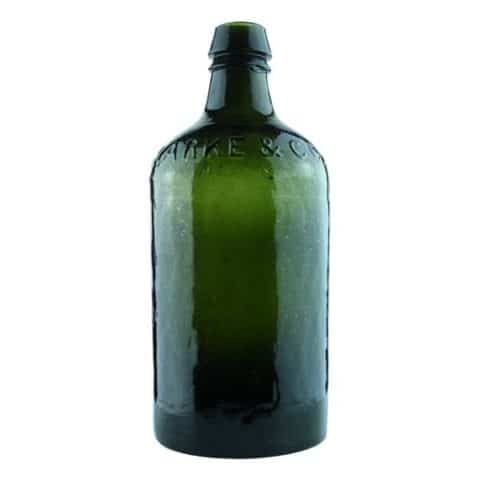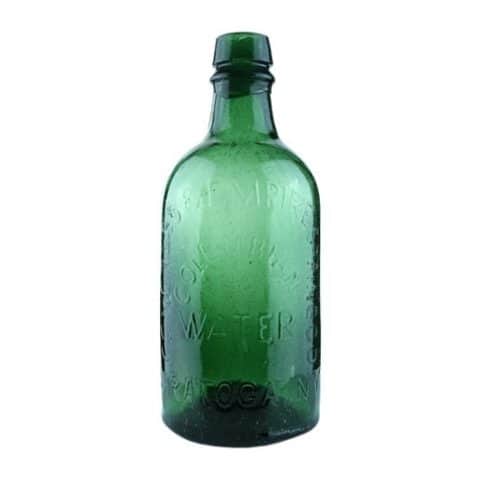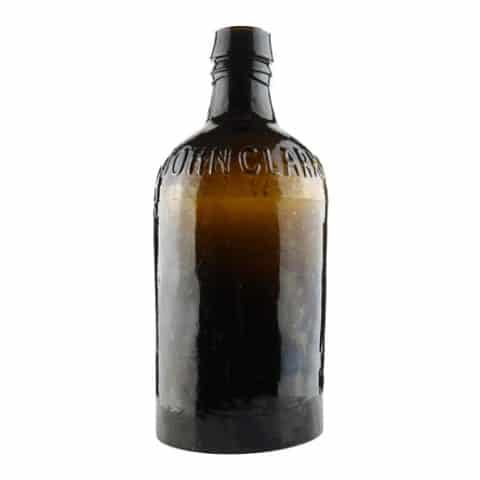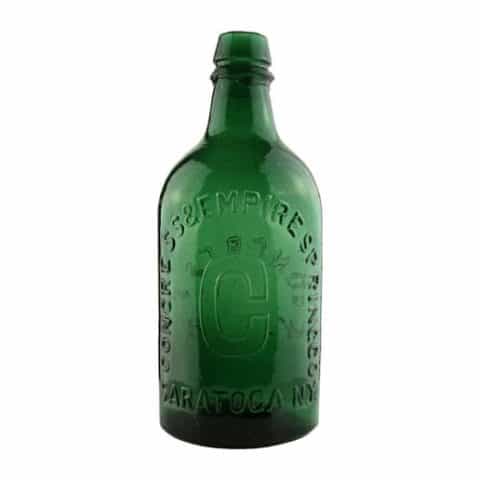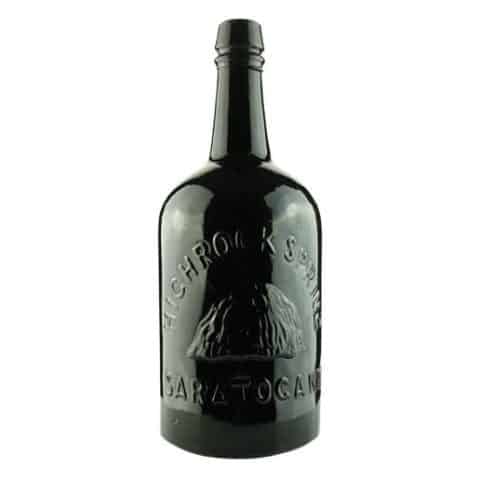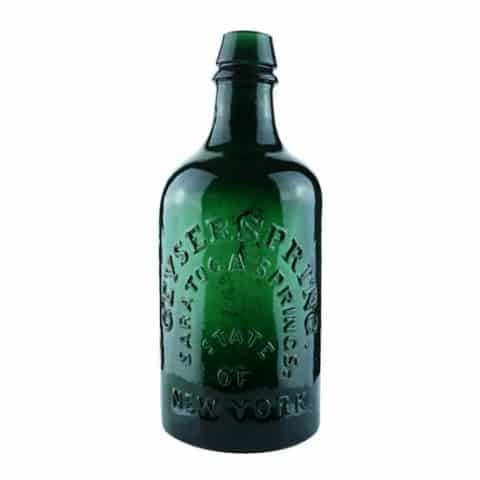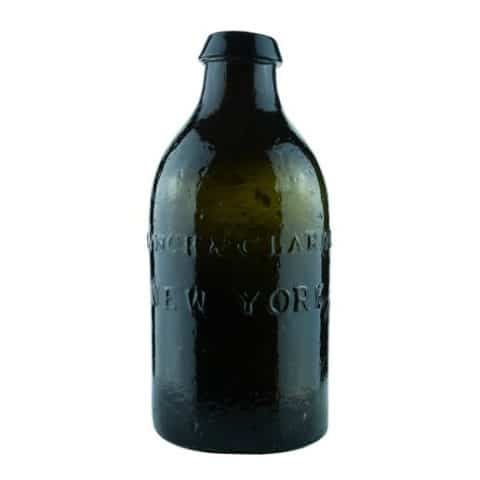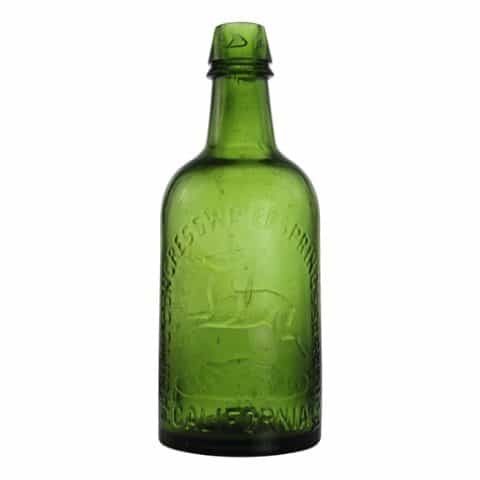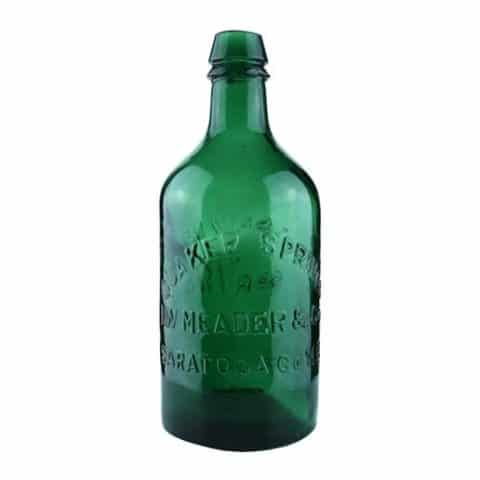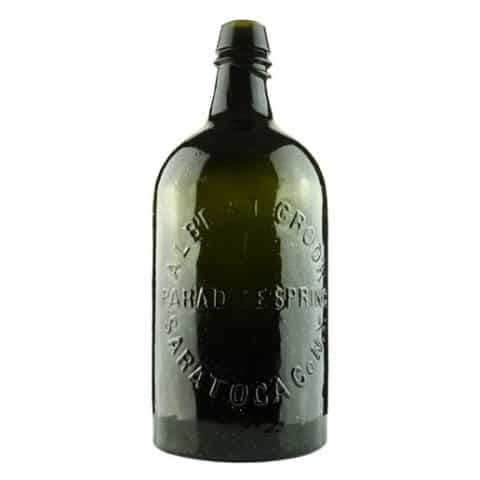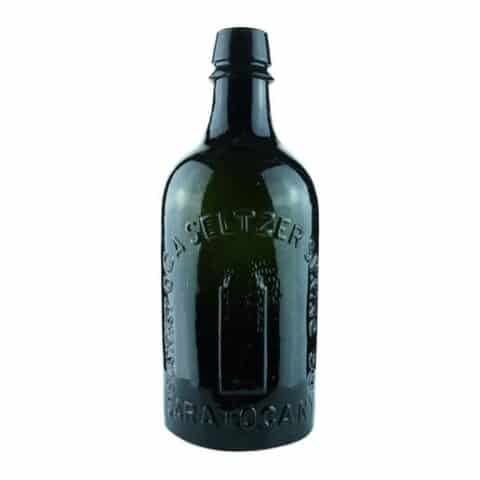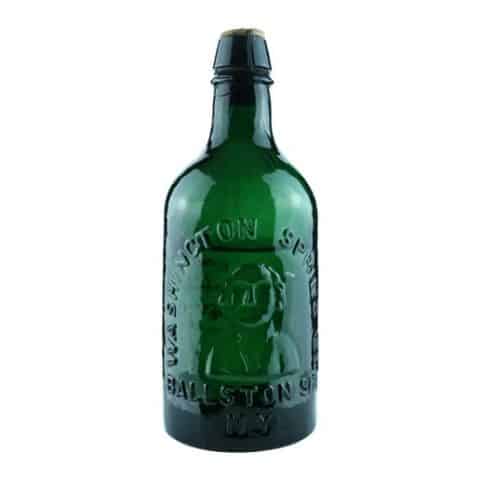Isham’s California Waters of Life
Isham’s
California Waters of Life
Alfred Huntington Isham, San Diego, California
Aquamarine Spring Water Bottle
Provenance: Eric McGuire Collection

Alfred Huntington Isham was born in 1846 in New York. As a young man, he likely noticed the successful healing characteristics and business opportunities associated with the mineral water businesses of Saratoga Springs and other locations in New York. A natural and polished salesman, Isham would move to California like many before him looking for golden opportunities and riches. Coming across a small natural bubbling spring, he turned it into a mineral water operation telling whoever would listen that he had found the genuine Fountain of Youth.
Isham was one of many boisterous patent medicine men centered around the last quarter of the 1800s and turn of the century, selling dubious concoctions that would purportedly heal anything under the sun. He had many ups and downs in life but was remarkably successful with his mineral water. Unfortunately, he died penniless in New York, of cerebral paralysis, in October 1910.
In 1892, Alfred Isham started marketing his “California Waters of Life” straight from the Springs at Isham, Mt. St. Miguel, San Diego Country, California, 12 miles east of San Diego. He was in debt and ensnared in various business liabilities at the time. He looked back to the East and started selling his product nationally with Boston and New York “Flat Iron Building” offices. Isham said his spring water was “Nature’s remedy for many diseases, among them Rheumatism, Gout, Constipation, Eczema, Diabetes, Bright’s Disease, Gall Stones, Catarrhal and all Stomach, Kidney and Bladder Troubles.” He guaranteed that his miraculous water would grow hair on bald heads and cure Cancer and other terrible diseases. Using newspaper testimonials, he would print outrageous claims of his Waters of Life bringing people back from death’s doorstep and even once said he brought a dead person back to live a prosperous life.
Isham’s bottling plant was a cobblestone-and-mortar house built over the running spring. His workers placed 12 bottles, ordered from the Illinois Glass Works, onto a wooden frame and dipped them into the water. Next, the full bottles were corked to preserve their essence. A two-quart bottle was sold for $1.50; a case with 12 bottles cost $12 and a half case $6.50.
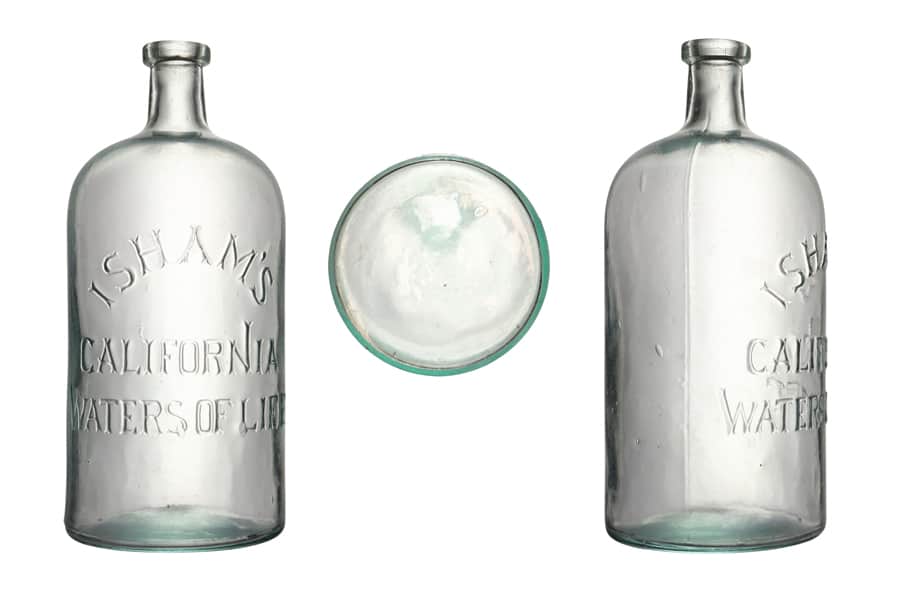
Our museum bottle measures 7 ¾ by 4 ¾ inches and is embossed in three lines, ‘ISHAM’S CALIFORNIA WATERS OF LIFE.’ The top line reading “Isham’s” is arched over the remaining horizontal straight line copy, all set in a very decorative thin serif typestyle. The clear aquamarine cylindrical glass bottle has a smooth base and a cylindrical tooled mouth. They are considered rare.
Isham’s business grew tenfold. Workers labeled any container they could find when the plant ran out of bottles, which it often did. Workers then loaded cases of 24 half-gallon bottles onto a mule-driven wagon, transporting them to the La Presa railroad head. Shipments went by train to San Diego, then to distribution centers in Chicago and New York, and on to England, Europe, South America, China, Japan, the Philippines, and Siberia. Isham was living the good life, which was as outlandish as his medicinal curative claims.
The California earthquake of April 18, 1906 ranks as one of the most significant earthquakes ever, rupturing the northernmost 296 miles of the San Andreas fault from northwest San Juan Bautista. Two days later, Isham ran ads in Eastern newspapers answering anxious inquiries that he said were not about anguished Californians but his product, “Be calm! Humanity, be calm! Out of the earthquake zone! Isham’s Springs uninjured by the quake!”
By this time, many newspaper and national magazine articles, such as the Collier’s campaign, were appearing, calling out the false and dangerous advertising of patent medicines and the well-known men hawking them. The tide turned swiftly and Isham and others were called out as quacks. He was called unsound, arrogant and a blasphemous faker of the public. Not long after, Congress passed the nation’s first Federal Food and Drug Act in 1906.
For Isham, things quickly fell apart. Lawsuits, legislation and growing public skepticism halted the flow of his healing waters. Isham would defy logic and expand his territories to include India and British South Africa. He also tried to inject new investors into the business to dodge negative publicity, by renaming his operation the “Isham Water Company.” The Panic of 1907, when the stock market fell almost 50 percent, curbed speculation. His massive advertising campaigns failed this time. It was over for Isham.
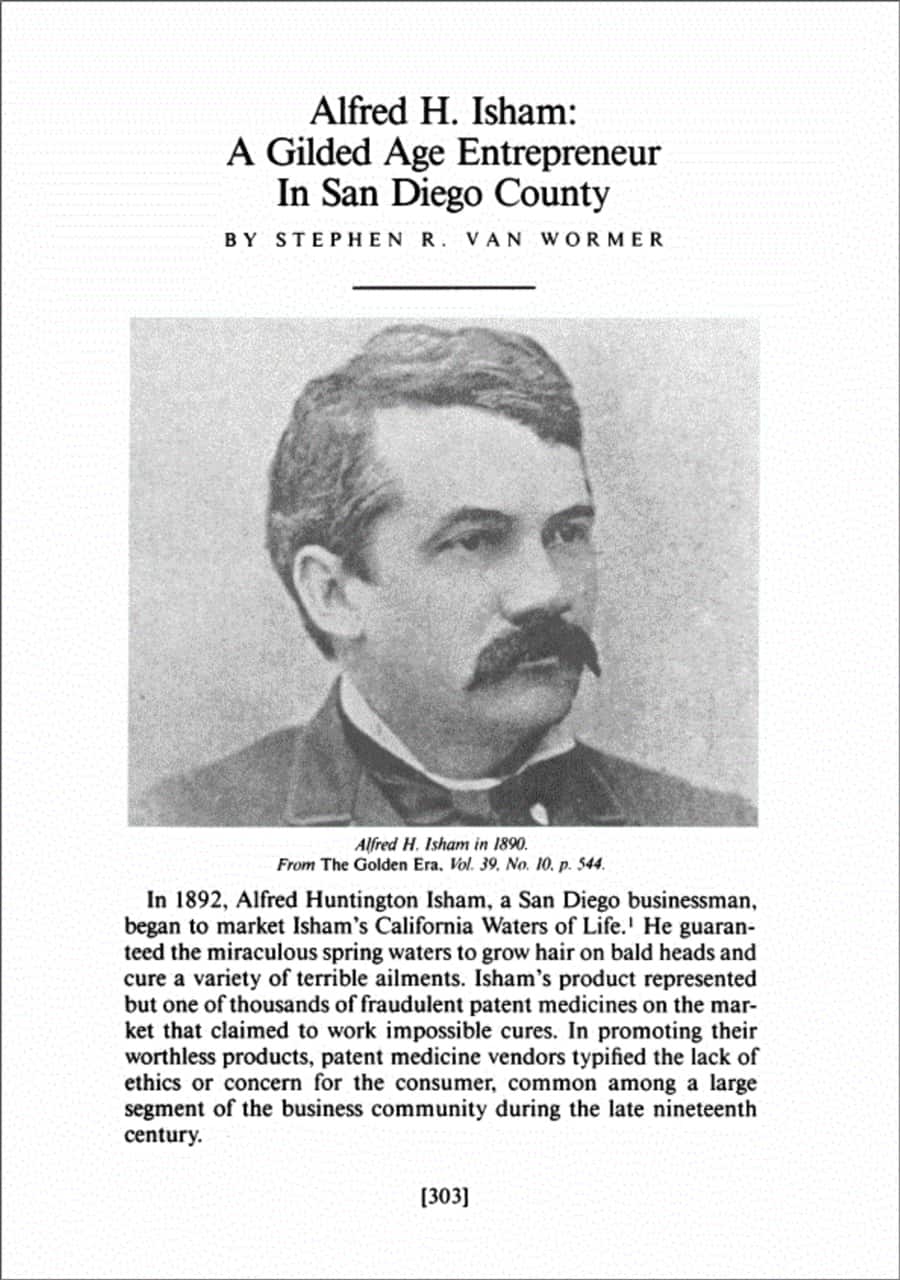
Primary Image: Isham’s California Waters of Life bottle imaged by Eric McGuire, FOHBC Virtual Museum West Coast Studio.
Support: Reference to Gilded Shams: The Great American Fraud (Part Three), San Diego Reader, September 20, 2007
Support: Reference to Alfred H. Isham: A Gilded Age Entrepreneur In San Diego County, Stephen R. Van Wormer, Southern California Quarterly (1984) 66 (4): 303–333.
Join the FOHBC: The Virtual Museum is a project of the Federation of Historical Bottle Collectors (FOHBC). To become a member.


